
July 17, 2012
New England Forest Rally 2012 and Ham Radios
At the end of the second week of July, 2012, thousands of people descended upon Newry, Maine for the classic New England Forest Rally (NEFR). If you were anywhere near this remote western part of Maine, you saw street legal racing cars covered with decals roaming Route 2 side by side with cars and trucks sporting antennas. That second group of vehicles would be the ham radio operators that show up to keep everyone safe.
This past July 13th and 14th was my second year working this unique public safety event. The NEFR is a hybrid public service event that is an excellent training exercise for those ham operators that desire to be part of the communications hub in the event of a real disaster.
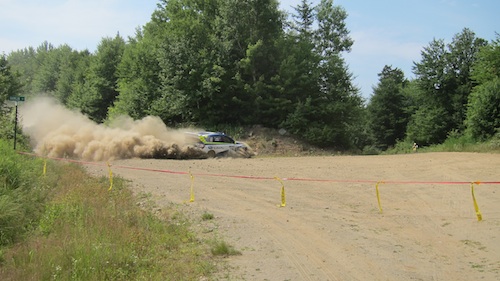
In a real calamity you need to be totally self-sufficient, you need to be ready to move from location to location with little warning and above all, you need to be able to communicate.
All of these components come together when you're part of the communications team for the NEFR. Dense forest, hills, no fixed repeaters and absolutely no power make the rally event a perfect place to hone your ham radio skills.
The challenges this year were dust and heat. Next year it could be pouring rain. Western Maine, along with much of New Hampshire, were in the grip of a mild drought the early summer of 2012. Combine this lack of rain with cars that zoom down roads spitting out rocks the size of baseballs and you have the perfect recipe for dust storms each time a rally car rockets past you.
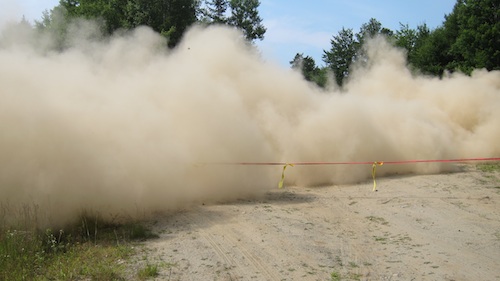
The appeal of this event from the perspective of the car drivers is the blend of races over the two days. There are usually ten or more races held at different locations in less than 36 hours. A race is called a stage. The stage route may be less than a mile, or it can be over fifteen miles long.
Once a stage is complete, the drivers and cars traverse the regular roads under their own power to the next stage location. This is why the rally cars have to be street legal. It's part of the rally experience.
The ham radio operators are split up into three teams that leapfrog to the different stages so they have time to set up, test radios and get ready for the drivers to show up. The team I was assigned to worked the prestigious Concord Pond stage on the first day of the rally and both Lost Weekend stages on the second day of the event.
The Lost Weekend stage was a loop road and it was raced counterclockwise (CCW) in the morning and then run clockwise (CW) after lunch.
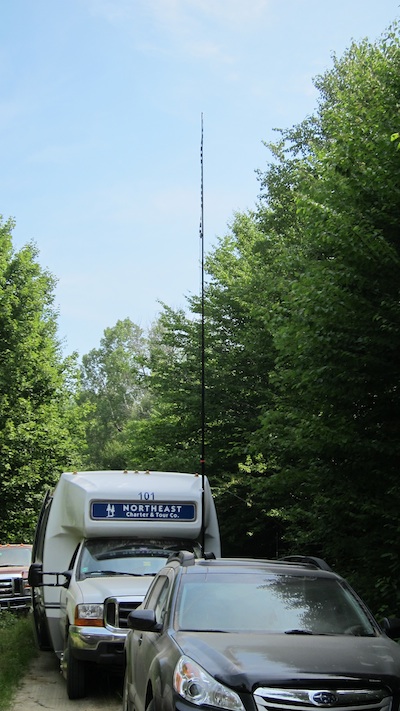
If you're a ham operator and have worked another public service event with your handheld 5-watt radio with success, you'll quickly discover at the NEFR that an HT is quite limited unless you pair it with a mobile 50-watt radio that can cross band repeat.
That's how I worked the rally this year. I was using my Yaesu VX-7R on 439.000 set on low power. The Yaesu FT-8900R in my truck was capturing the signal and booming it out at 50 watts on the primary simplex 2-meter frequency we were using.
I was usually no more than 300 feet from my truck, so the low power setting on my HT was perfect. This low power setting helped preserve battery power in the HT and allowed me to work all day with one battery.
It's really helpful if you have a portable mast antenna that you can connect to your car, truck or a tree. You suspend from the top of the mast a 2-meter J-pole antenna that allows you, in most cases, to hear every other ham on that stage.
Using a rooftop antenna on a car and truck will work, but I was not able to hear all the other radios on my stages all the time. I guarantee you that next year I'll have a mast antenna that I can erect in minutes and connect to the mobile 50-watt radio in my truck.
If you like bugs, dust, mud, the woods, fast cars, food from plastic bags and challenging work, then the New England Forest Rally is the place for you. In all seriousness, I highly recommend working this event if you want to see how you'll react under pressure in a real disaster. I'm sure you'll do well, especially if you use my NEFR Survival Guide. That's a blog post I'm going to create very soon! Be sure to watch the videos below.
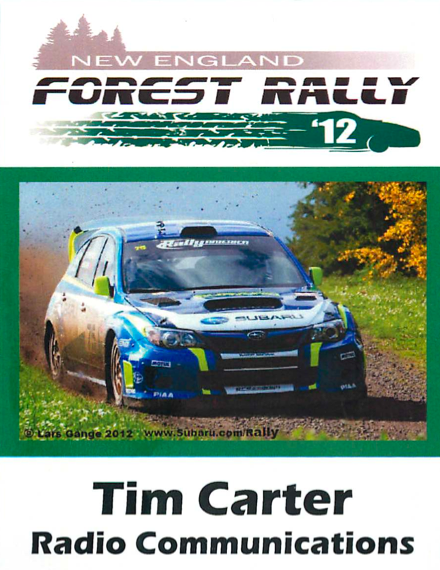
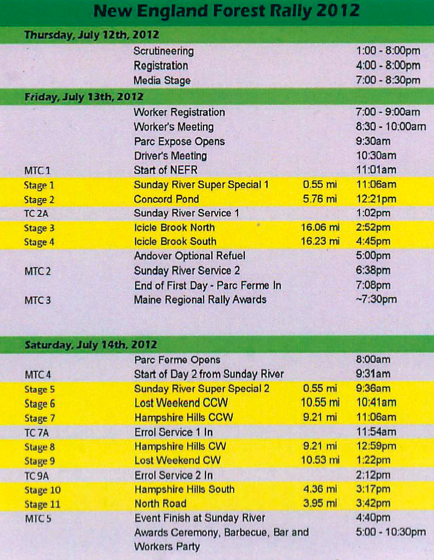
Posted by Tim Carter at July 17, 2012 6:39 AM
Comments
Post a comment
